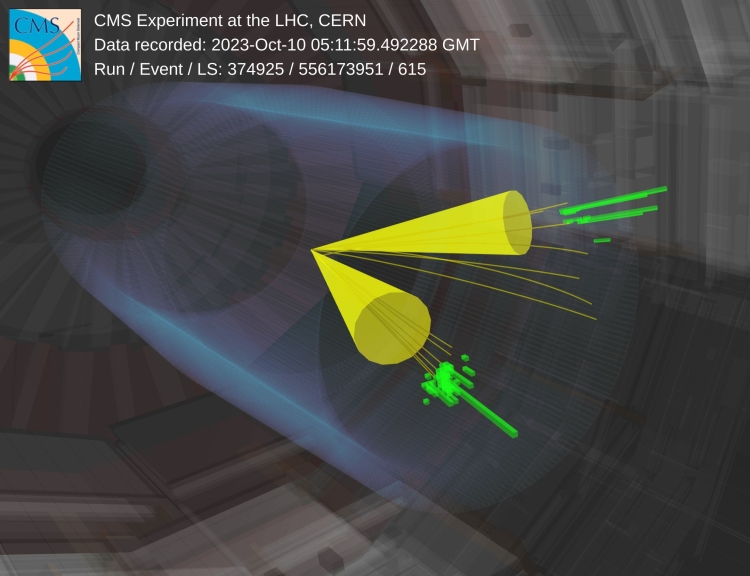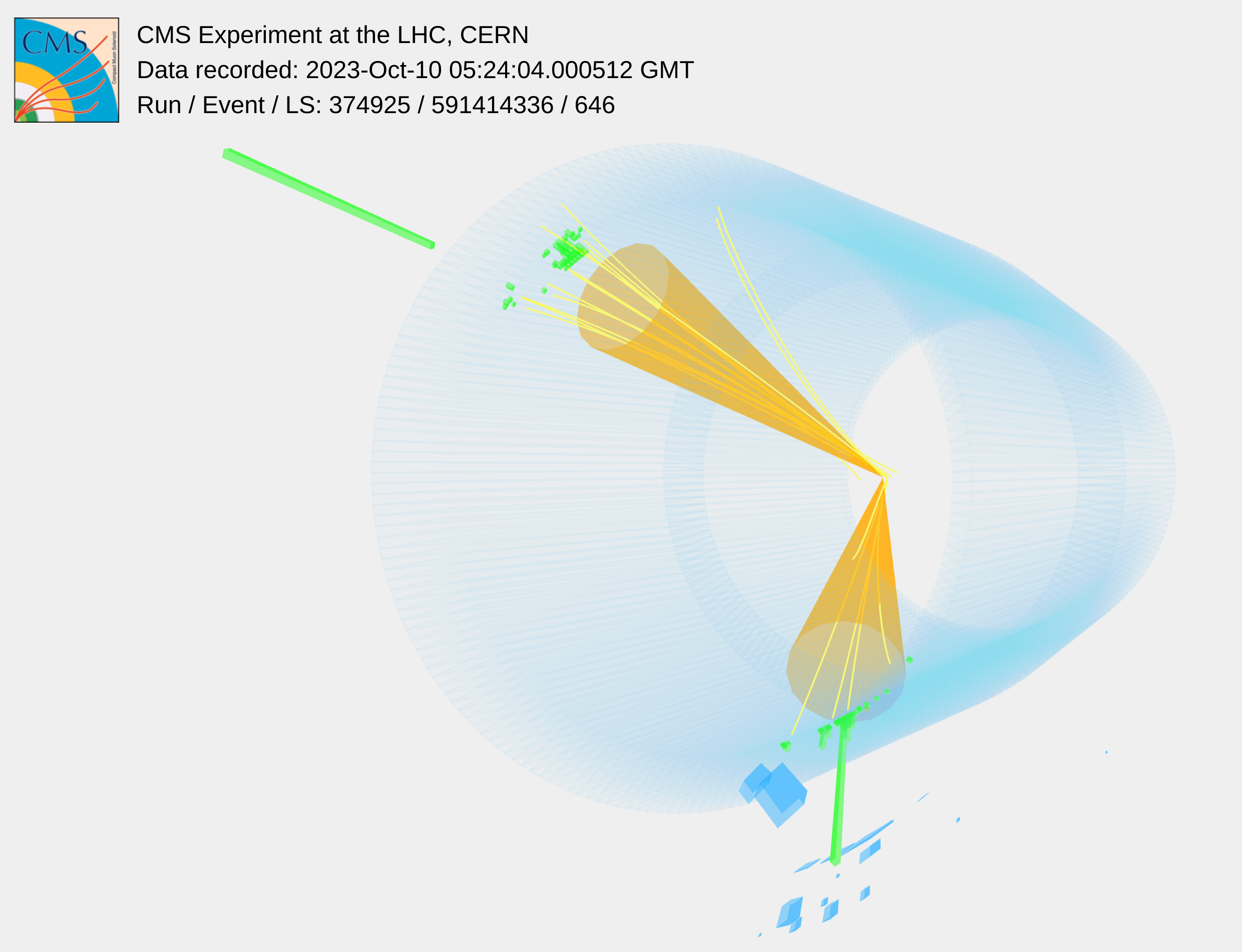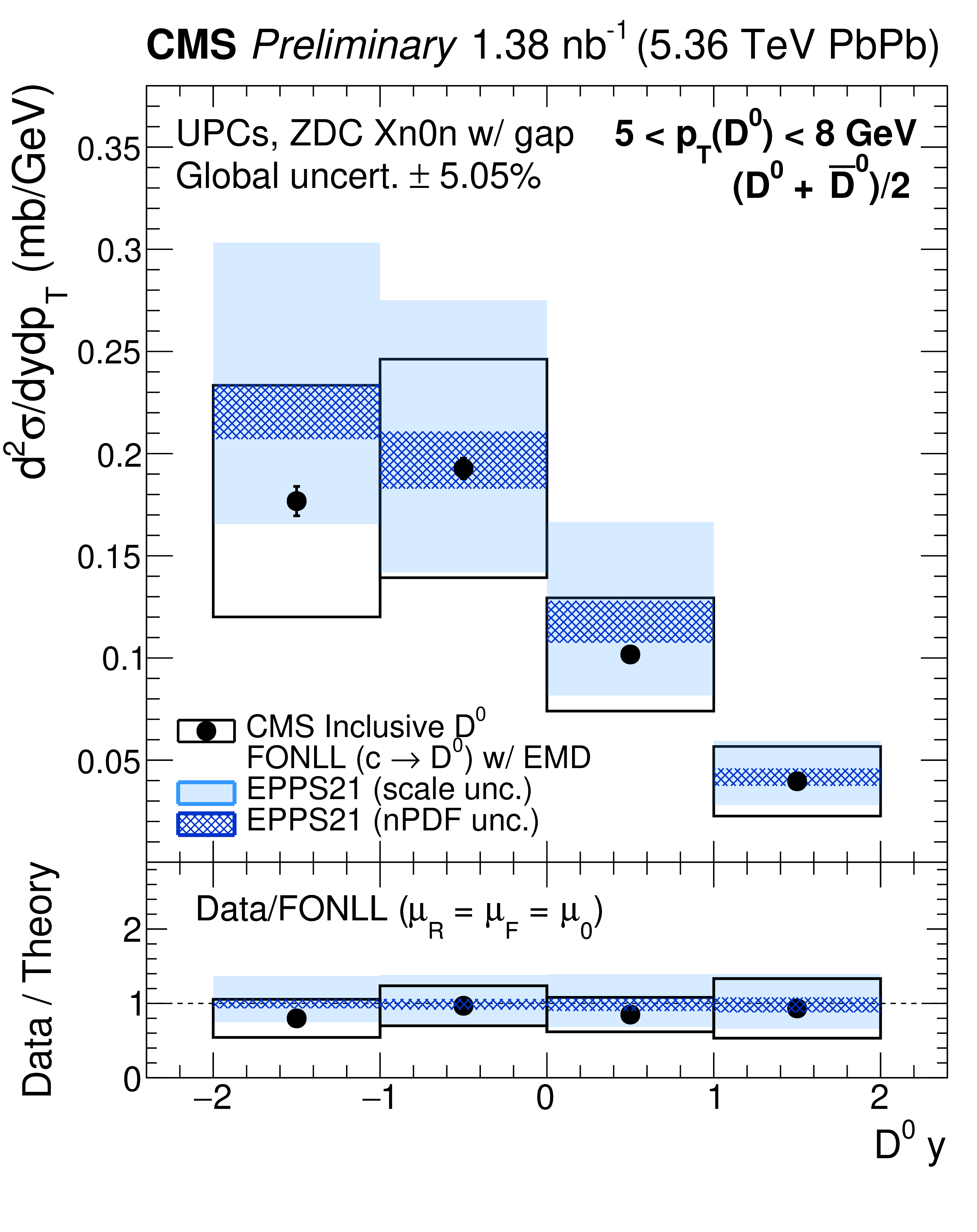
In a recent result, the CMS experiment measures the production of charmed D0 mesons in collisions of a photon with a heavy lead nucleus for the first time.
Atomic nuclei are made up of protons and neutrons, which in turn are made up of more fundamental particles called quarks and gluons. While the common picture of protons and neutrons is that they are comprised of three quarks (up-up-down for protons and up-down-down for neutrons), we have long known that these valence quarks are only part of the story, and that in reality a sea of quark-antiquark pairs and a lot of gluons make up a sizeable fraction of the composite particles energy. This information is encoded in what are commonly called parton distribution functions, which have been studied extensively at previous particle accelerators, like HERA at DESY in Hamburg, which operated between 1992 and 2007.
At the LHC, heavy ions accelerated to ultrarelativistic velocities create strong electromagnetic fields. These fields can equivalently be thought of as clouds of photons surrounding the boosted nucleus. The photons can interact with each other in “light-by-light scatterings”, or with the nuclei in “photonuclear scatterings”. Such processes are collectively referred to as ultraperipheral collisions (UPCs), in contrast to hadronic collisions where the two nuclei overlap. UPCs are notably a very clean environment for probing the nuclear structure as the final state has very little background, as can be observed in event displays such as Fig. 1.

Figure 1: An event display of dijet production in a UPC event at CMS. The ultraclean detector environment and jets pointing close to the direction of the incoming beams is typical of such events.
In particular, photonuclear UPCs have long been considered a tool for studying the nuclear parton distribution functions. By measuring the produced final states in photonuclear scatterings, new constraints are placed on these parton distribution functions. In particular, at LHC energies the photons can probe said distribution functions to smaller constituent momentum fractions than those achieved at the HERA particle accelerator, and complement results anticipated from the future Electron-Ion Collider. Charm in UPCs are a particularly interesting probe, as the significant mass of the charm quark gives good theoretical control down to very low transverse momentum, complementing probes restricted to higher momentum regimes such as inclusive dijets.
In this analysis, for the first time in UPCs, D0 meson production is observed. Events are first selected using signals from the Zero-Degree Calorimeters (ZDCs) located on either side of the interaction point 140 meters away. When a nucleus interacts, it breaks up into remnant neutrons and protons, the former of which are no longer bound in a charged configuration and therefore freestream to the ZDCs. As a result, a signal in the detector in a time window consistent with collisions indicates nuclear breakup, while lack of signal indicates the nucleus remains intact. For photonuclear interactions, events are identified based on:
1. The presence of signal in one ZDC, corresponding to the nucleus the photon interacted with, inducing break-up
2. The absence of signal in the opposing ZDC, corresponding to the intact nucleus that supplied the interacting photon.
In addition to a ZDC selection, events are further characterized by the presence of a rapidity gap, or lack of detector hits in a significant fraction of its longitudinal extent, in the direction of the intact nucleus. This is required to reduce contamination by events with a nucleus-nucleus interaction that still produce a UPC-like signal in the ZDC. This gap is defined using the Hadron Forward (HF) calorimeter, which covers the forward continuous extent of the CMS detector in either direction. If the HF contains no candidates above a minimum energy threshold in the direction of the intact nucleus, then the event is retained.
D0 (and its antiparticle D0 bar) meson candidates are reconstructed using charged tracks via the decay to K– π+ (in case of D0 bar, K+ π–) particle pairs. All track combinations are considered, with each track taking an assumed mass of the K+ and π– and vice versa. All pair combinations passing kinematic selections consistent with D0 characteristics are used to construct an invariant mass distribution as a function of D0 transverse momentum and rapidity, which is then fitted to extract the final D0 yield. Yields are corrected for a slew of detector effects such as reconstruction efficiency and trigger efficiency, and then normalized by the collected luminosity to get the final cross sections – which is a measure of the rate of a process to occur.

Figure 2: The D0 meson production cross section as a function of rapidity.
The analysis was performed by a team of professors, postdocs, and in particular the graduate students Janice Chen, Tzu-An Sheng, and Jordan Lang, all currently studying at MIT and whose tireless effort made this possible. Figure 2 shows the production rate, the cross section, for D0 production as a function of rapidity and compared to a theory comparison incorporating state-of-the-art nuclear parton distribution functions. The theory is found to be consistent with the data within the systematic uncertainties, and the findings will be essential input to reducing the theoretical uncertainties in the future.
This is the first time this process has been measured in UPCs, and therefore opens an entirely new channel for studying parton distribution functions. The results are the first step of the open heavy flavor UPC measurements in CMS at the LHC, and with time promise to constrain the nuclear parton distribution functions as methods are refined and systematic uncertainties are reduced from both theory and experiment.
Written by: Christopher Mcginn, for the CMS Collaboration
Edited by: Muhammad Ansar Iqbal
Read more about these results:
-
CMS Physics Analysis Summary (HIN-24-003): " Constraining nuclear parton dynamics with the first measurement of D0-photoproduction in ultraperipheral heavy-ion collisions at the LHC "
-
@CMSExperiment on social media: Bluesky - Facebook - Instagram - LinkedIn - TikTok - Twitter/X - YouTube

